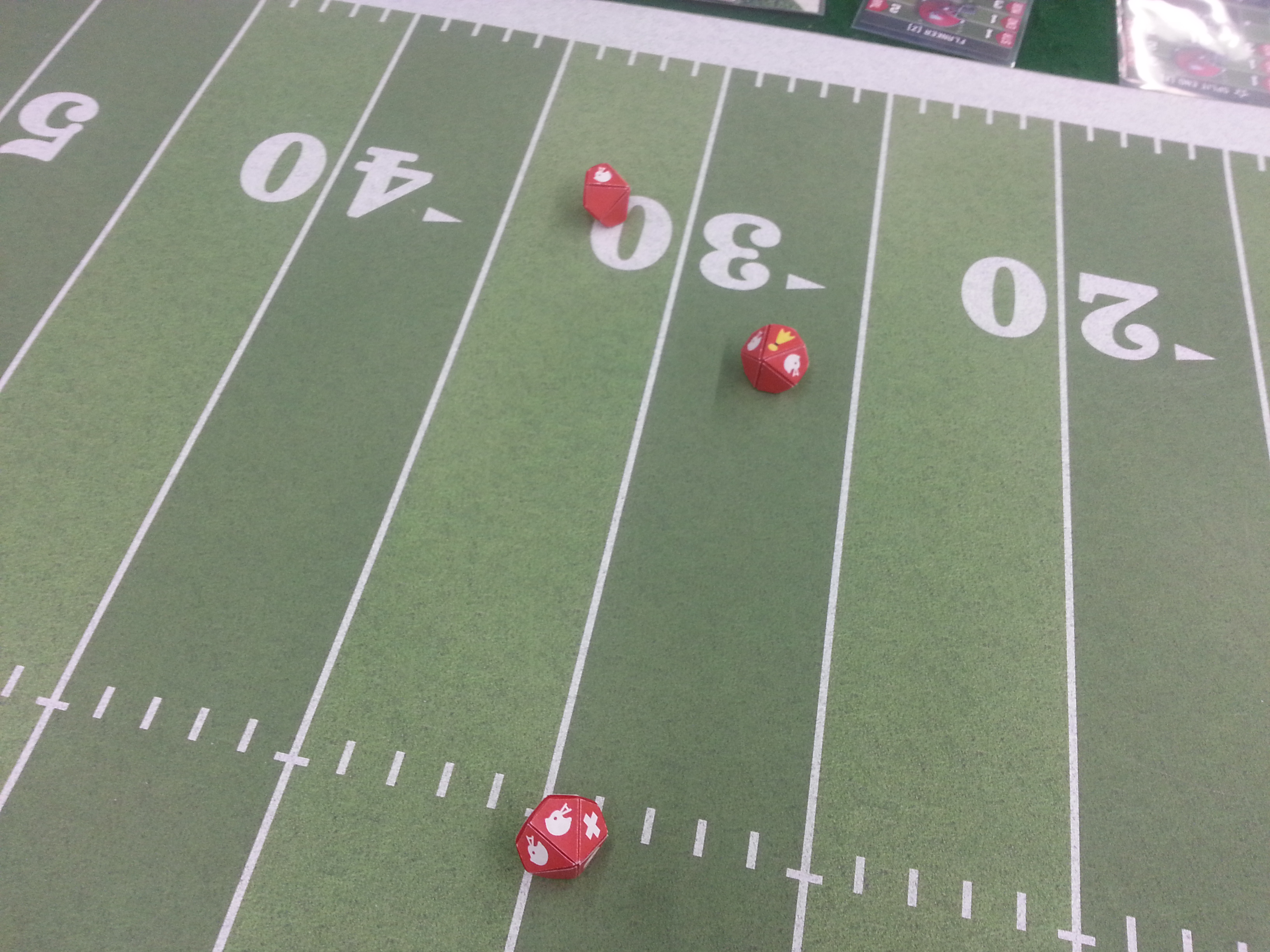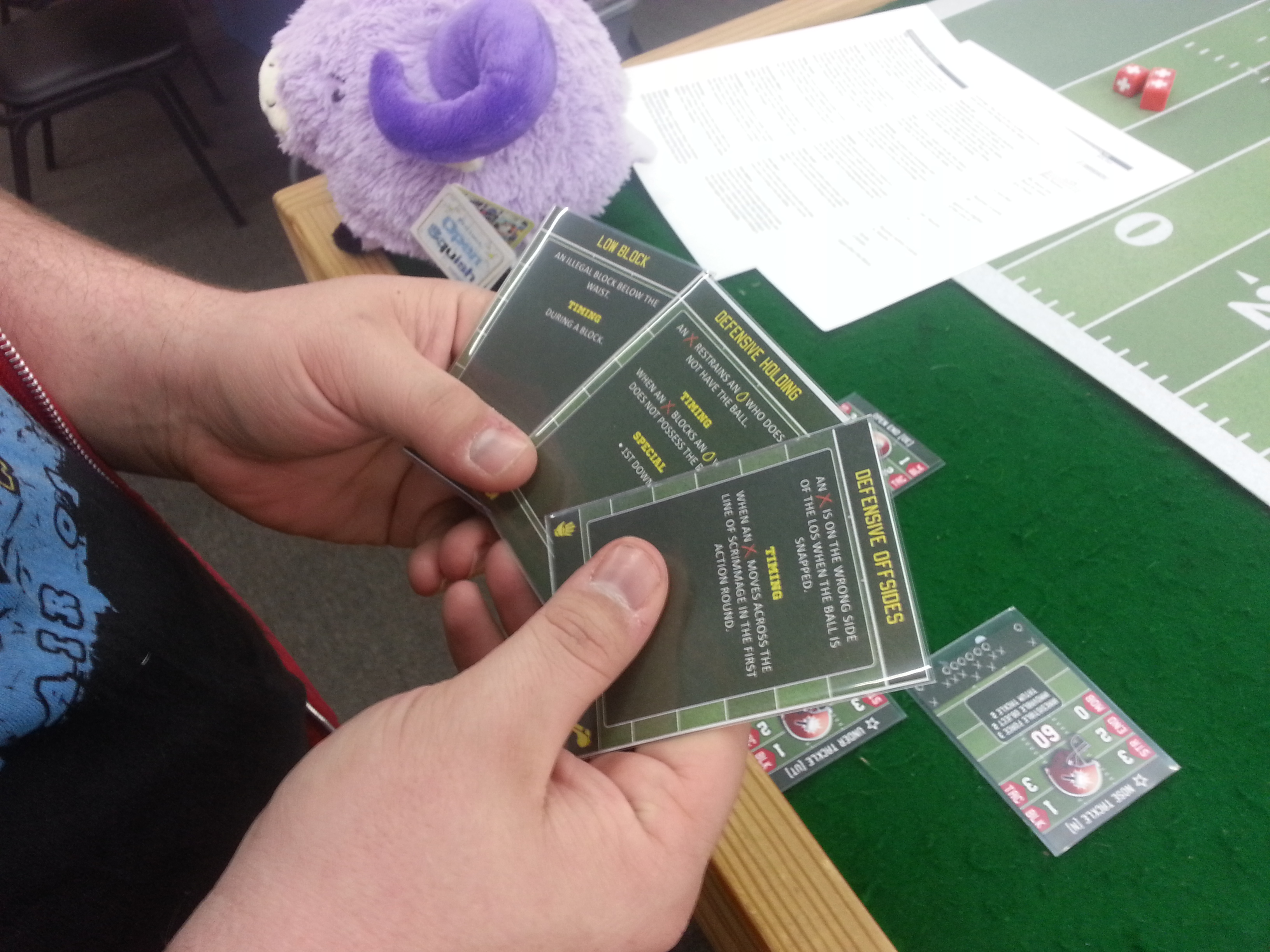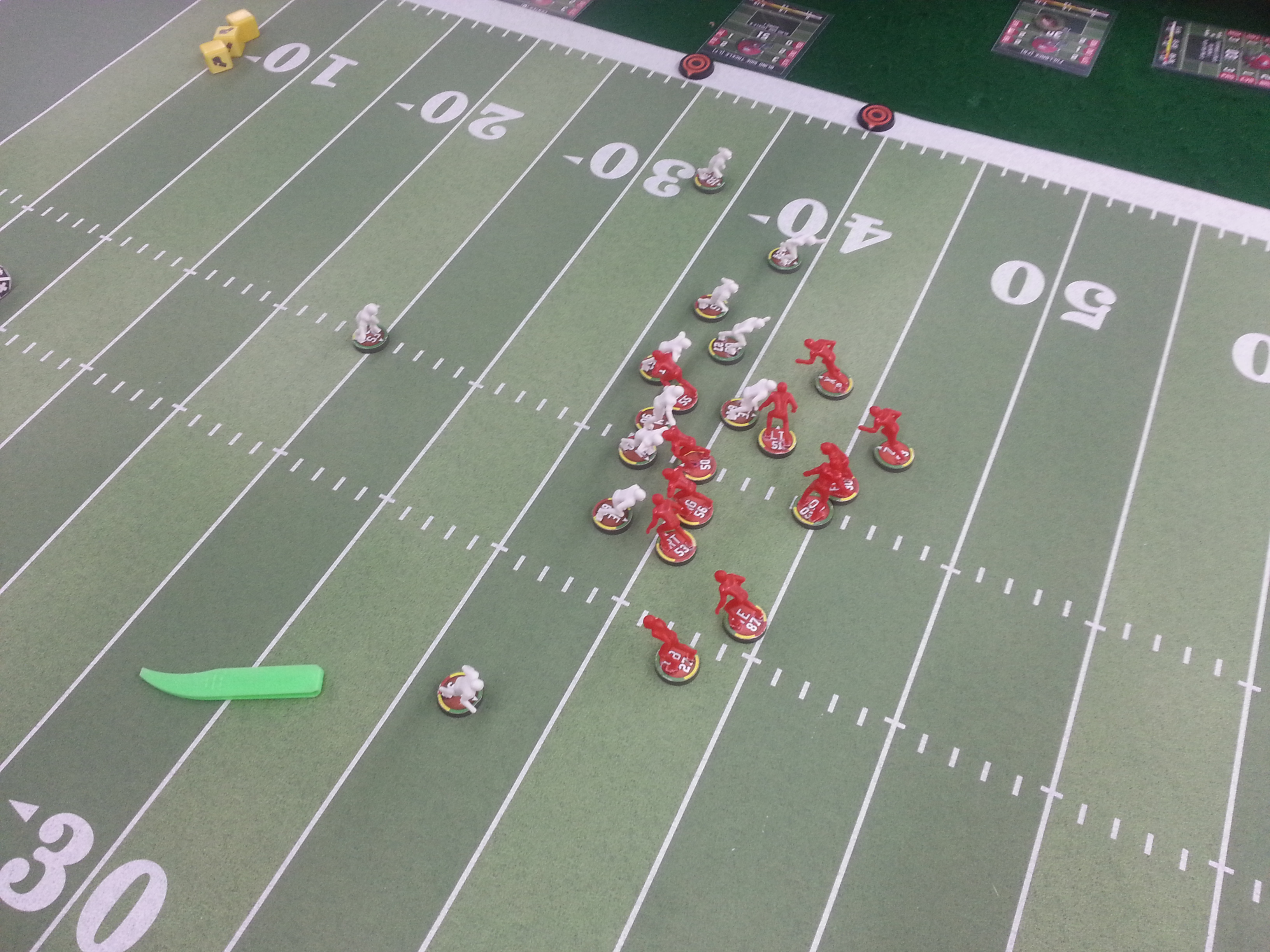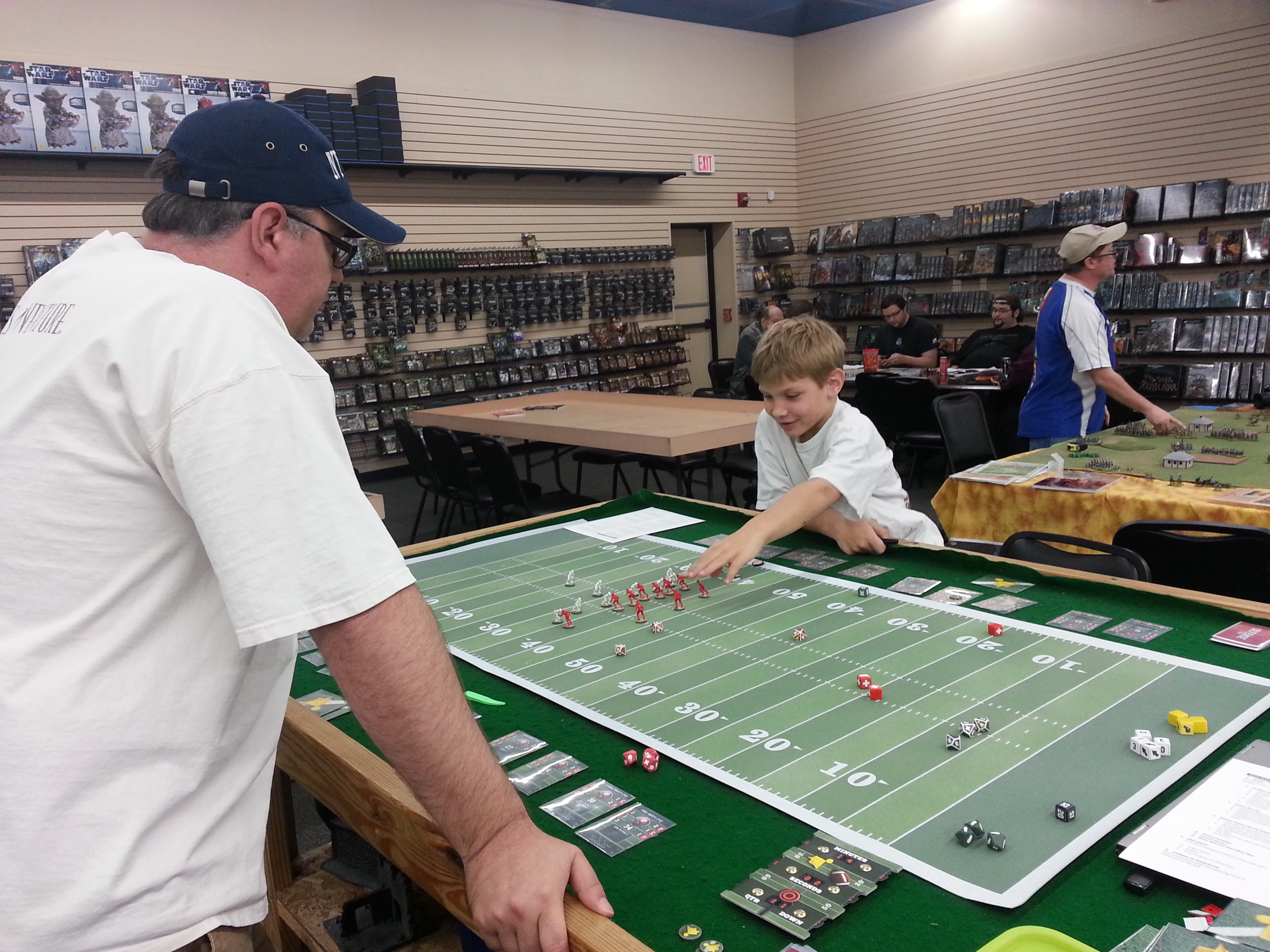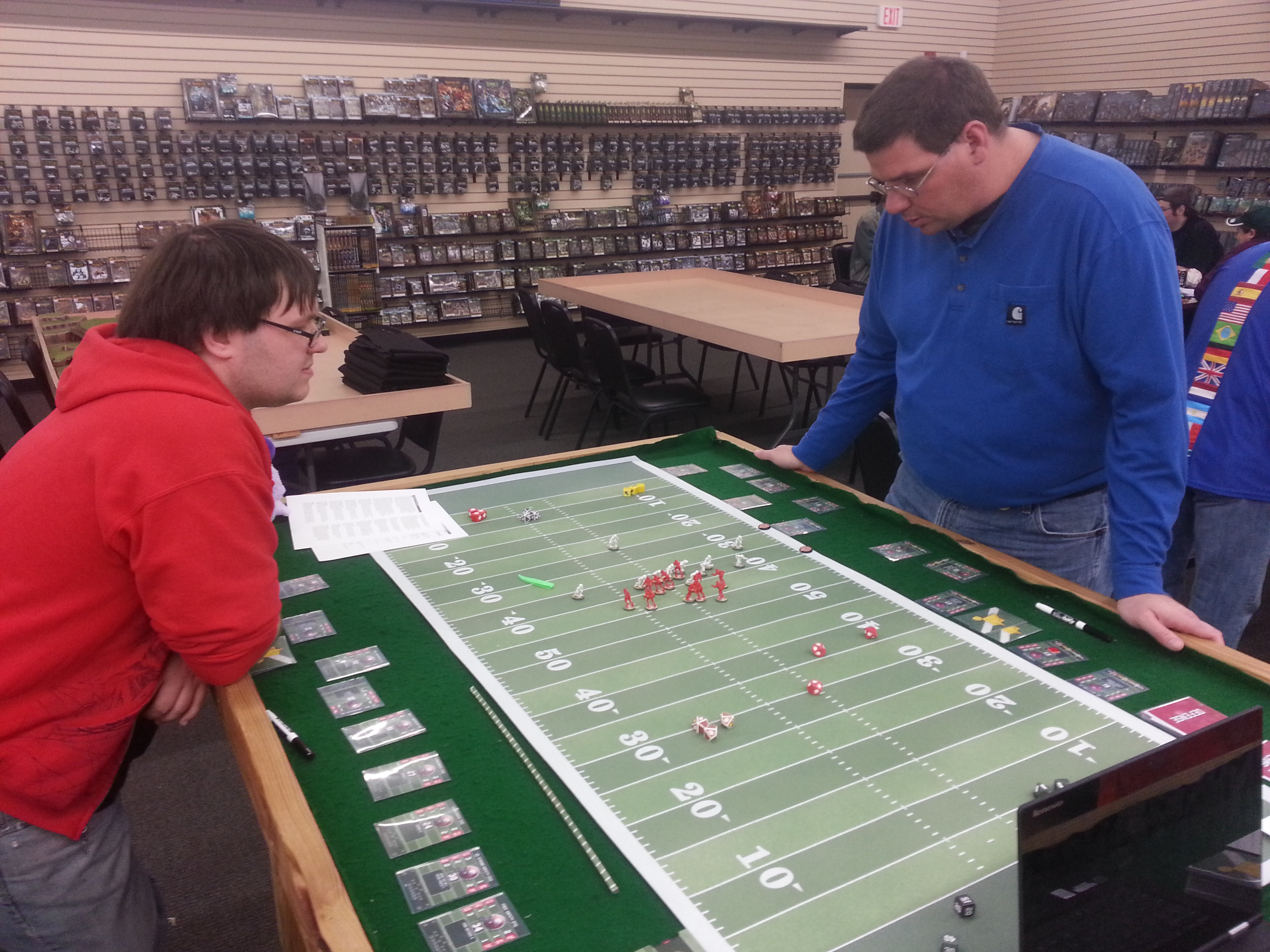 It was a great day for gridiron action over at Madness Comics in Plano last Saturday, as we demoed the new Revision 5 rules of QBB! Some of the changes in this Revision:
It was a great day for gridiron action over at Madness Comics in Plano last Saturday, as we demoed the new Revision 5 rules of QBB! Some of the changes in this Revision:
- Movement has been greatly simplified. It’s more abstract, but the play is much faster for it.
- Tackle Zones have undergone a massive change, allowing players to have a larger influence on the field and open up the defensive line a bit so it is more realistic.
- Blocking has been consolidated and streamlined. Every Block works the same, but the end results are different for stand up blocks, tackles and (a new result) Jamming, depending on the timing and location of the hit.
- Pass Blocking and Tackle are now Passive Skills, i.e. they function to affect the skills or rolls of other players, instead of creating new rolls, so less Dice Rolling there.
- Probably the biggest change, Kicking has totally been simplified and streamlined so that now you handle Kick-Offs, Punts and PAT Kicks with a few simple rolls instead of playing them out (a boring and laborious thing to do and I’m really hoping they introduce the new 7/6 PAT rule next season). As a result of the changes, the Special Teams Unit is now represented by a single Card instead of a series of individual player cards, which also reduces the part count considerably.
The other big change is that the Penalty System is now card based.as well as dice based. We had a problem in that the previous two systems were kicking out penalties at an absurd rate (well, for Pro Football, it would have been just right for College and High School) along with the fact that some penalties are incredibly specific and these weren’t being taken into account without unnecessarily overburdening the main rules with exceptions. Cards allow exception based ruling to be used without having to actually remember the exceptions just to play the game. All the info is on the card.
The new system is pretty simple. If a Penalty Flag comes up during a roll and is not rerolled (as above) the opposing player is allowed to either play a Penalty Card from his hand or draw one from the Penalty Deck.
As you can see, Penalty Cards have a bit of information on them. The first bit is the description, which tells you what the penalty means. The next bit is the Timing (also represented by a small icon on the bottom left) which tells you when you can play that penalty. If the timing isn’t right on any of your cards, then you can’t play any. There may be a Special Rules section with specific instructions on what happens when the card is played and, finally, there are a number of whistle icons at the bottom right side of the card. These not only tell you the yardage penalty (5 per whistle unless the Special Rules say otherwise) but are also used for a Penalty Check.
Once a penalty is played on a player, you place the Penalty Card on the Player Card. Once the play is over, you make a Penalty Check, using the yellow Penalty Dice (seen in the upper left corner of the above pic with a single Whistle showing). If the number of whistles on the dice match the number on the card, the player is penalized.
This new system seems to have really captured the feel of penalties in a real game without overly unbalancing the table-top game and making it more about ‘who got penalized when’ over ‘who had the best tactics.’
Overall, the streamlining of the rules.has sped up the game considerably and even a seven year old kid grasped the concepts and got into the game (and was very disappointed when I had to leave). So I’d say that we have maybe one more revision to go. With that and some original sculpts for the models, QBB will be ready for prime time!

